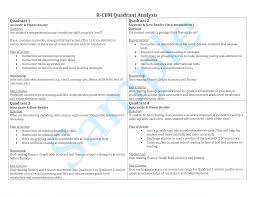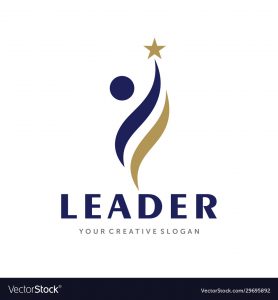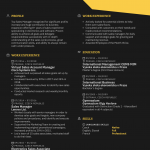Education Instructors Design Courses and Assessments
Using the framework of Understanding by Design can help Education Instructors Design course content and assessments in an integrated way. Traditional instructors typically approach the design of a course in a “forward design” mode, developing activities around learning objectives, then building assessments around them. The framework, however, forces instructors to start by considering the learning goals of the course first. Learning goals represent what instructors hope students will learn and are the basis for developing assessments and a student’s evaluation.
Backward design
Backward design is an instructional design process that helps educators create courses and units that focus on learning. The process encourages transparency and intentionality throughout the Using the framework of Understanding by Design can help Education Instructors Design course content and assessments in an integrated way. and implementation process. This helps instructors create course objectives, lesson plans, and assessments that align with learning outcomes. This method of design also makes it easier for teachers to communicate their intentions and goals to their students.
Backward design is a design strategy that emphasizes the central role of teachers and their students in learning. It helps instructors clarify learning goals, design revealing assessments, and craft engaging learning activities. Ultimately, the goal of backward design is to improve student understanding. Wiggins and Mc Tighe have outlined three stages of backward design:
The first step in the backward design process is to define course objectives. This will serve as the foundation of your course Using the framework of Understanding by Design can help Education Instructors Design course content and assessments in an integrated way.. From there, you will need to identify appropriate learning activities and assessments to achieve those goals. Once you have defined your learning objectives, you can then move forward with designing your course.
Backward design is an Using the framework of Understanding by Design can help Education Instructors Design course content and assessments in an integrated way. strategy that emphasizes evaluating learning outcomes and evaluating course alignment. In higher education, curriculum mapping is a key tool for evaluating course alignment. In essence, course alignment occurs when learning objectives are reflected in the learning outcomes. When a course aligns with its intended outcomes, teaching and assessment activities are designed in a way that will lead to student success.
Human-centered design
Designing for people’s perspectives is critical to creating successful spaces, experiences, and processes. The process of human-centered design entails a team of trusted experts and multiple perspectives. The goal of this process is to identify design drivers that are important to users and translate them into a physical space. The end result is a space that is effective for students and instructors.
Education Instructors Design thinking in has received attention across subject areas and has the potential to improve learning experiences for students. When a teacher combines human-centered design with collaborative problem-solving, they can engage students in learning activities that meet course objectives and standards. By engaging students in the design process, educators can provide them with an innovative mindset and skill set to help them succeed.
Human-centered design is a design mindset that is essential for educators. Educators are learning designers. The human perspective is central to the design process, and educators must be able to apply design methods in their daily work. It also offers a practice-oriented approach to solving complex problems.
Storyboards
The first step in storyboard design is to determine the content you wish to cover. Whether your course will be video or audio, a storyboard can help you create a cohesive presentation. It should also contain a script or narration. Depending on your needs, there are many different storyboard templates available.
For instance, a storyboard could include quotes from the story or pictures from the story. You could even ask the learners to add images to the storyboard, which makes the stories more personalized. Another online tool, Boords, lets users quickly build storyboards with the help of royalty-free stock images. It also has a unique Animatic Tool for real-time collaboration.
Storyboards force educational instructors to think about the structure and flow of the course. This prevents the need for unnecessary rework when developing a course. The process takes a little time, but it’s a lot faster than rewriting the entire course from scratch. Storyboards can also help you make sure your course meets the expectations of your audience. In this way, you can create a more engaging learning environment for your students.
When designing eLearning, a storyboard can help you ensure that your students get the most out of your eLearning content. Having an understanding of the goals of your course will help you focus on the content that will best meet your goals.
User stories
User stories are an effective tool to help you define the needs of your learners. They can be written on sticky notes or index cards and arranged on a table or wall. You can also use software to manage them digitally. Use the storyboards to write down the sequence of events and features of your education website or eLearning course. In addition to ensuring a clear understanding of the needs of your learners, the stories can generate ideas for content, design, and functionality.
To write a user story, consider writing a story from the perspective of the user. It can be short and simple, or more complex. The goal is to create a story that is easily understandable by all stakeholders. Ideally, a user story will spark additional ideas and allow your stakeholders to brainstorm about the requirements.
When designing a customized education solution, user stories can help you discover subtle differences and make design decisions based on these differences. For example, a user story may be used to help a trainer add a new course. A trainer may want to include the course title, abstract, and location. This information will give the trainer the ability to advertise the course.
Collaboration between peers
Collaboration between peers is a powerful tool that can be used in a variety of ways, from traditional projects to more modern applications. When designed correctly, collaboration will promote student relationships and create opportunities to give and receive feedback. It will also foster responsibility in using digital tools for learning. In this article, we’ll discuss some ways to make collaboration work in the classroom.
Teachers have a diverse range of perspectives and can help each other improve their practice. One such example is design-based implementation research, which positions teachers as full members of the research team. The goal of this type of research is to identify and solve persistent practice problems from multiple stakeholder perspectives, including teachers. One such persistent problem is the pressure to meet standardized testing standards, which narrow learning and inhibit innovation.
Teachers can contribute to the process by co-designing new curriculum. This type of collaborative process fosters knowledge development among teachers and increases their professional expertise.
Principles of instructional design
The principles of instructional design are a systematic way of developing a course or a lesson. This method builds on theory and allows instructors to utilize their skills and knowledge to come up with ideal activities and assessments. There are several different models of instructional design. Some of them are narrative-based, like the Storybook Method, while others are more process-based.
In UDI, instructors should consider the individual differences of their students when creating course materials. These differences may include differences in culture, learning styles, or abilities. By applying UD principles, instructors will be sure that all course activities meet the needs of all students. The principles of instructional design are:
In recent years, Instructional Design has become a popular topic in education. The use of technology in the classroom has forced educators to rethink traditional methods of instruction. Before the digital age, students would receive instruction from instructors and then apply what they learned through homework. This has changed in the digital age, with students having access to content and learning anytime, anywhere. This change has led to a new concept known as the “Flipped Classroom.”
A critical principle of instructional design is to make materials flexible. Students learn better when they can relate new information to previous knowledge and apply theoretical knowledge to real-life situations. Different learners learn differently, so providing different formats for the same material encourages students to engage with it.
Cost of instructional design
A professional instructional designer can be a valuable asset in your educational program. These individuals specialize in developing course curriculums and assessing learning materials. Their work can help transform a subject into something that is digestible and engaging for students. They also create questions, establish learning objectives, and determine the appropriate level of interactivity. The costs of hiring an instructional designer vary greatly depending on the complexity of the project, and the expertise of the individual you choose.
The cost of hiring an instructional designer can range from $12,000 to $15,000 per course. Fortunately, there are a variety of options available to educators. Some instructional designers are free to use, while others require an affordable subscription. Coursera Plus offers a free seven-day trial and a subscription for $59 a month.
The cost of hiring an instructional designer can vary greatly depending on how much time is needed to design a course. If you want to create a course on organic chemistry, you will likely need a subject matter expert with higher knowledge and expertise. Higher-level experts will spend more time creating materials, so the cost of hiring an instructional designer will vary correspondingly.















